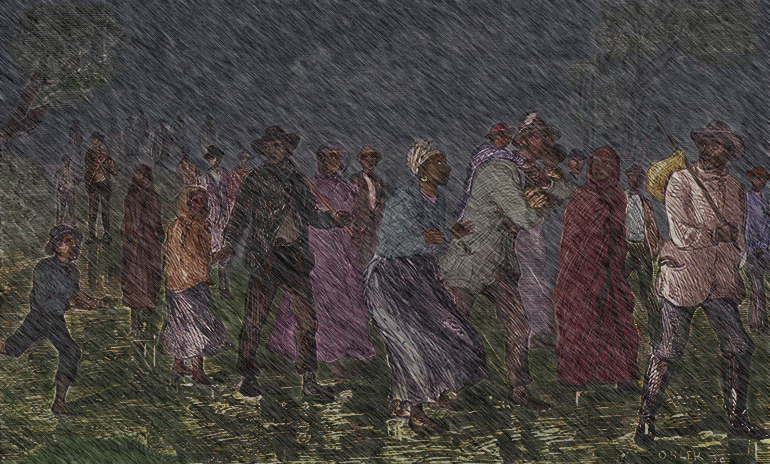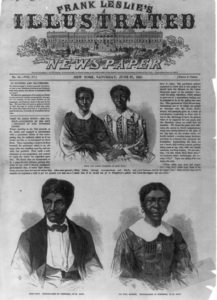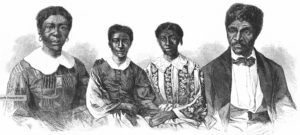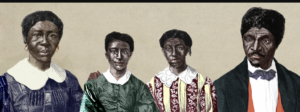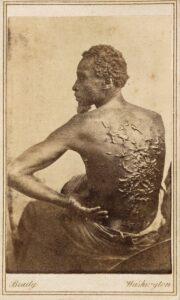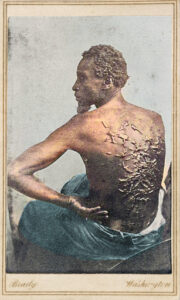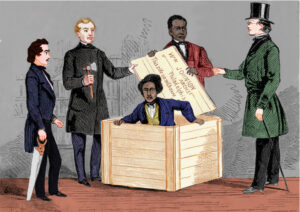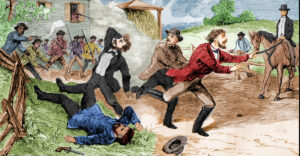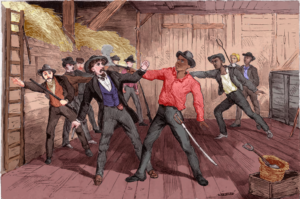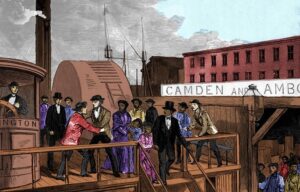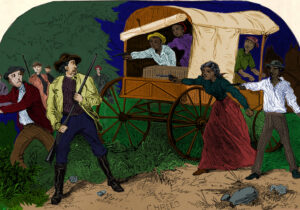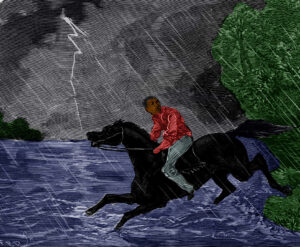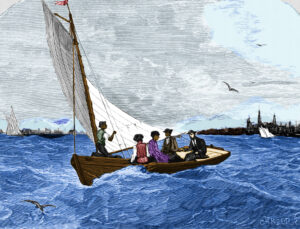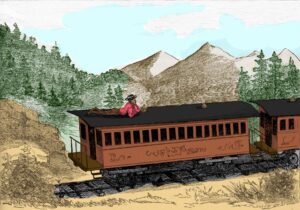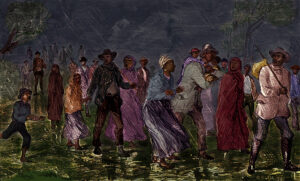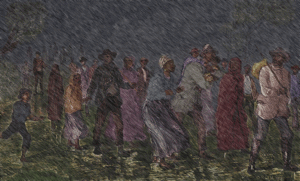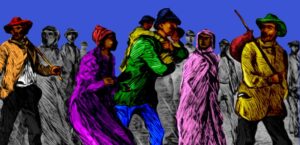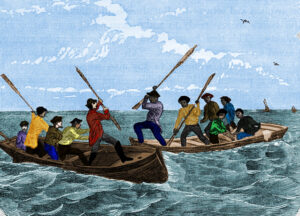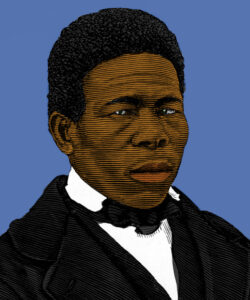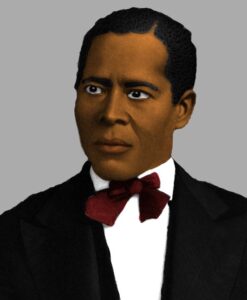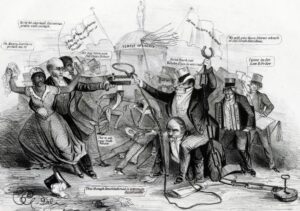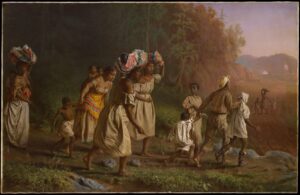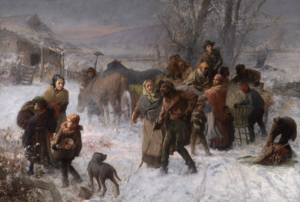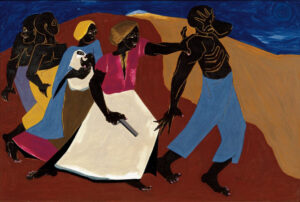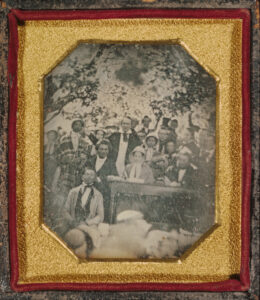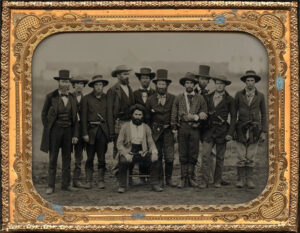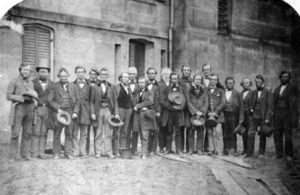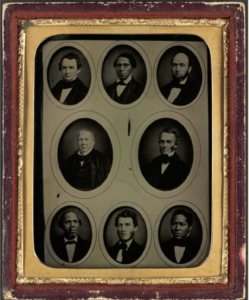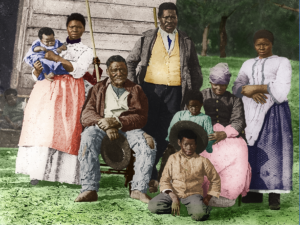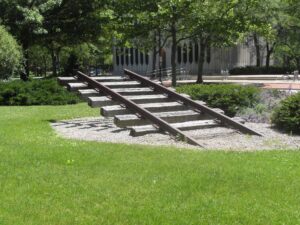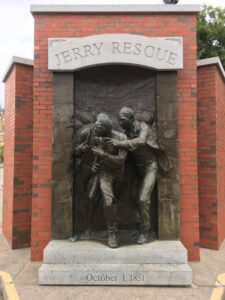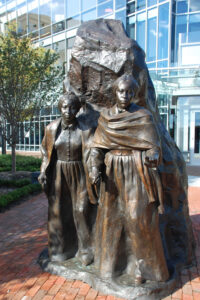Banner image: “Twenty-eight fugitives Escaping from the Eastern Shore of Maryland,” (October 28, 1857), original illustration by Wilbur Osler for William Still, Underground Railroad (1872), colorized and animated by Amanda Donoghue (House Divided Project)
On this page, you will find downloadable versions of the images used in the print handbook and at the online companion site, organized by selected content categories. First, however, we offer a gallery of colorized illustrations created by students and staff at the House Divided Project for this handbook as well as for other partnership projects with the National Park Service. All images presented below should be in the public domain and free to use for educational and non-commercial purposes. Where relevant, however, we do provide credits to the original copyright holders.
Colorized Illustrations
The cover image for the new handbook on the Underground Railroad comes from an original illustration which appeared in William Still’s memoir, The Underground Railroad (1872). John Osler was the engraver of the print, titled, “The Christiana Tragedy,” which appeared between pages 350 and 351 in the subscription edition. Osler and other notable artists such as Edmund B. Bensell, S. Foy, Wilbur F. Osler, C.H. Reed, and John Sartain engraved a total of about seventy intricate and quite beautiful illustrations for Still’s work, which created a narrative from records Still had kept as chief organizer of the Philadelphia Vigilance Committee’s activities on behalf of freedom seekers in the 1850s. For additional background on these illustrations, see an online exhibit from the National Portrait Gallery available from Google Arts & Culture.
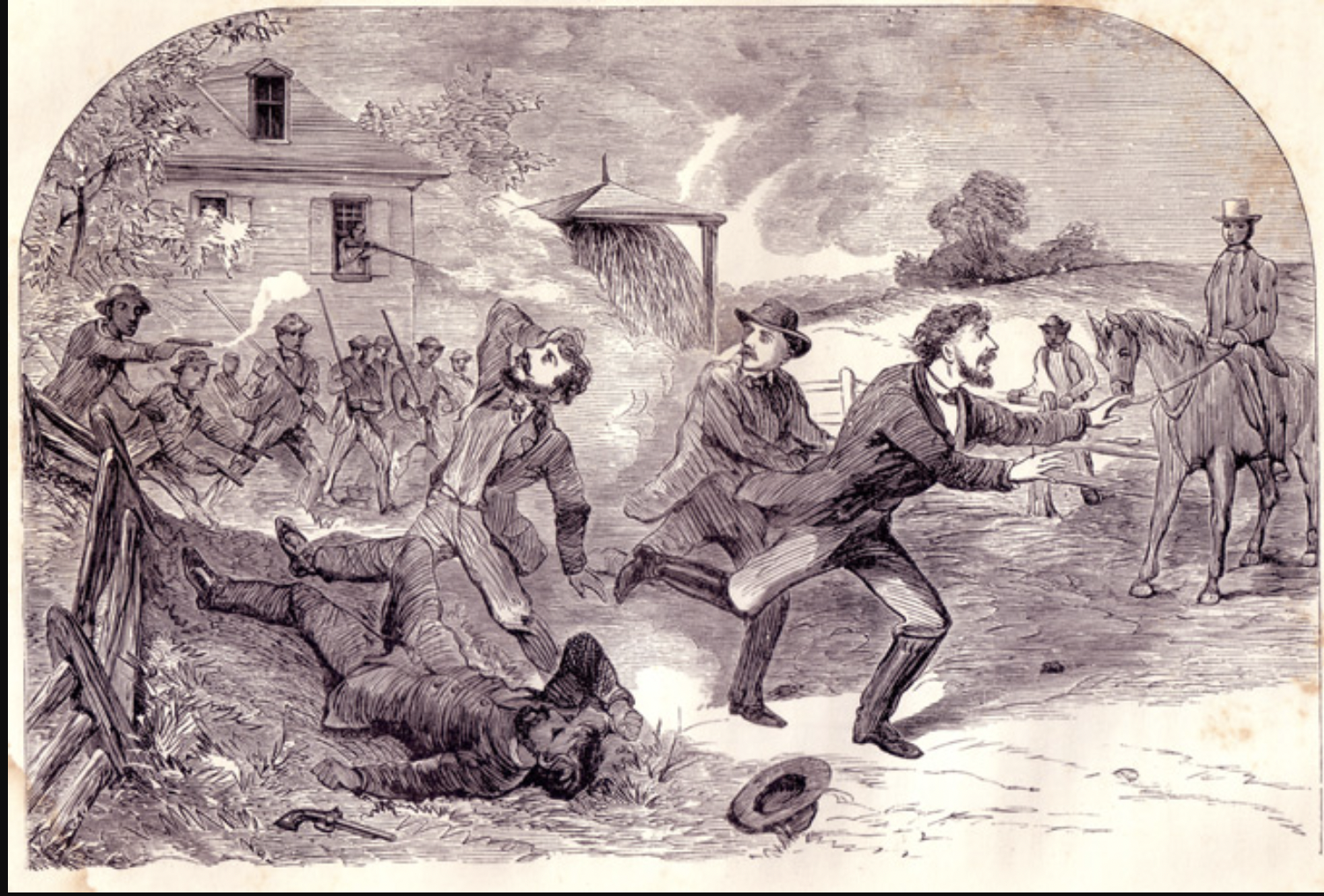
Original illustration of “The Christiana Tragedy” from John Osler’s engraving (1872) (House Divided Project)
We colorized the illustration and used a detail from that new image for the cover of the handbook as a way to highlight how what has become a relatively obscure story concerning the Christiana resistance in September 1851 now offers a gateway to help better understand the complex and often openly defiant operations of the Northern vigilance network and the Underground Railroad. Gabe Pinsker, a high school student in Pennsylvania, colorized Osler’s image during summer 2022 using the open-source editing platform, GIMP.
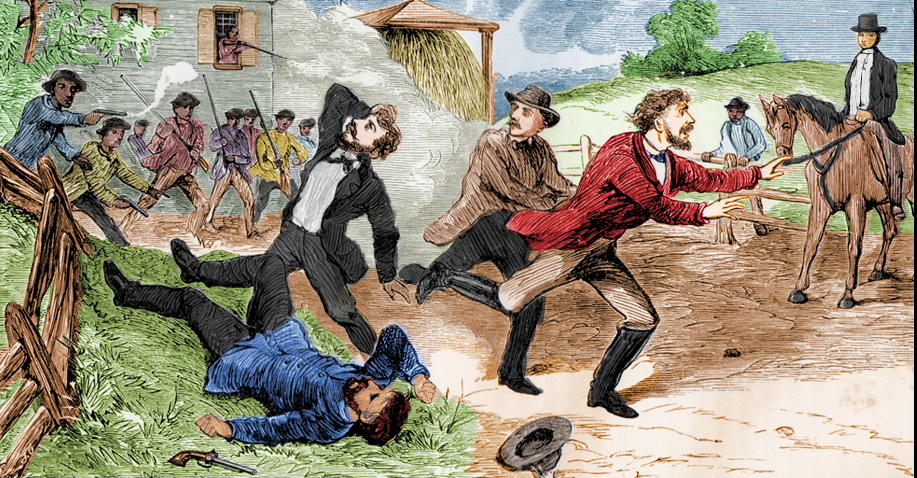
Christiana (1851), orig. by John Osler, colorized by Gabe Pinsker (House Divided Project)
Colorizing historic images can offer a powerful way to humanize and help bring to life various subjects from the past. Consider the following transformation of Dred and Harriet Scott and their daughters, Eliza and Lizzie, from a June 26, 1857 front page at Frank Leslie’s Illustrated Newspaper to a photoshopped and colorized family portrait created by Dickinson student Cooper Wingert in fall 2020. The result depicts a family of freedom seekers, who had sought their liberation through the courts rather than by running away, and who ultimately (despite an adverse ruling from the US Supreme Court) achieved freedom by manumission in the summer of 1857. Read more about their story at our Civil War classroom site.
- Photoshopped by House Divided Project
- Scott family portrait, edited and colorized by Cooper Wingert, Fall 2020
Now it is also possible to colorize historic photographs using artificial intelligence (AI). Here is an example from early 2023 that required only a few manual refinements by our student interns.
For more information on this dramatic wartime photograph, see this teaching post at Matthew Pinsker’s undergraduate Civil War course site
Colorized Illustrations from William Still’s Underground Railroad (1872)
Students from the House Divided Project are now busy colorizing the roughly seventy richly engraved illustrations by Edmund B. Bensell, S. Foy, John Osler, Wilbur F. Osler, C.H. Reed, John Sartain, and others which first appeared in William Still’s Underground Road (1872). Most of these scenes depict dramatic Underground Railroad escapes documented in the antebellum records of the Philadelphia Vigilance Committee, but there are also numerous portraits of freedom seekers and vigilance operatives. The credit link provides access to the original image as it appeared in print and now available online through the House Divided research engine.
- Henry “Box” Brown (1849), colorized by Forbes (House Divided Project)
- Christiana (1851), orig. by John Osler, colorized by Gabe Pinsker (House Divided Project)
- Conflict in MD Barn (1853), colorized by Forbes (House Divided Project)
- William Still helped coordinate the rescue of Jane Johnson in 1855 in Philadelphia, colorized by Gabe Pinsker (House Divided Project)
- Christmas Day in Hood’s Mill, MD (1855), colorized by Charlotte Goodman (House Divided Project)
- Potomac River (1856), orig. by C.H. Reed, colorized by Gabe Pinsker (National Portrait Gallery)
- Escape from Norfolk (1857), colorized by Gabe Pinsker (House Divided Project)
- Escape from Alabama (1857), colorized by Gabe Pinsker (House Divided Project)
- Cambridge MD (1857), orig. by Wilbur Osler, colorized by Amanda Donoghue (House Divided Project)
- Cambridge MD (1857), animated by Amanda Donoghue (House Divided Project)
- Slave Stampedes banner, colorized by Gabe Pinsker (House Divided Project)
- Chesapeake Bay (1860), colorized by Jordan Schucker (House Divided Project)
- Peter Still (1872), colorized by Gabe Pinsker (House Divided Project)
- William Still (1872), orig. by John Sartain, colorized by Gabe Pinsker (House Divided Project)
Illustrations
- “Practical Illustrations of the Fugitive Slave Law” (1850) (Library of Congress)
Paintings
- Theodor Kaufmann, “On To Liberty” (1867) (The Met)
- Charles T. Webber, “The Underground Railroad” (1893)
- Jacob Lawrence, “Forward” (1967) (North Carolina Museum of Art)
Photographs
- Abolitionists at Cazenovia Convention (1850) (Google Arts & Culture)
- John Doy (seated) and his rescuers (c. 1859) (House Divided Project)
- Oberlin-Wellington Rescuers (c. 1859) (Ohio History Connection)
- Philadelphia Vigilance leaders (c. 1852) (Boston Public Library)
- Multiple generations of freedom seekers, Beaufort, SC (c. 1862) (Library of Congress)
Sculptures & Monuments
- UGRR, Oberlin, OH (1977) (Oberlin College)
- Jerry Rescue, Syracuse, NY (1990) (Slavery Monuments)
- Edmonson Sisters, Alexandria, VA (2010) (Slavery Monuments)
